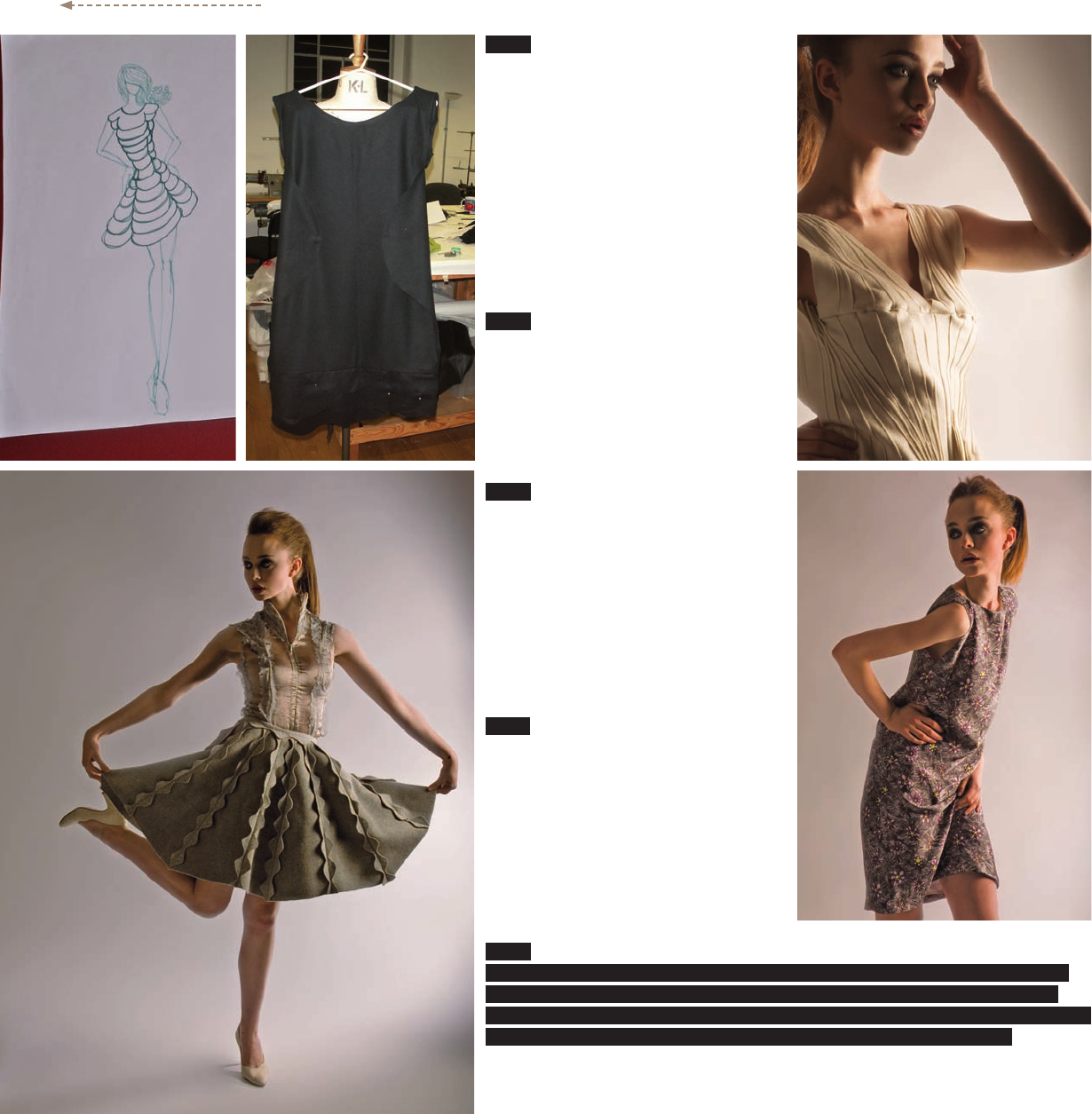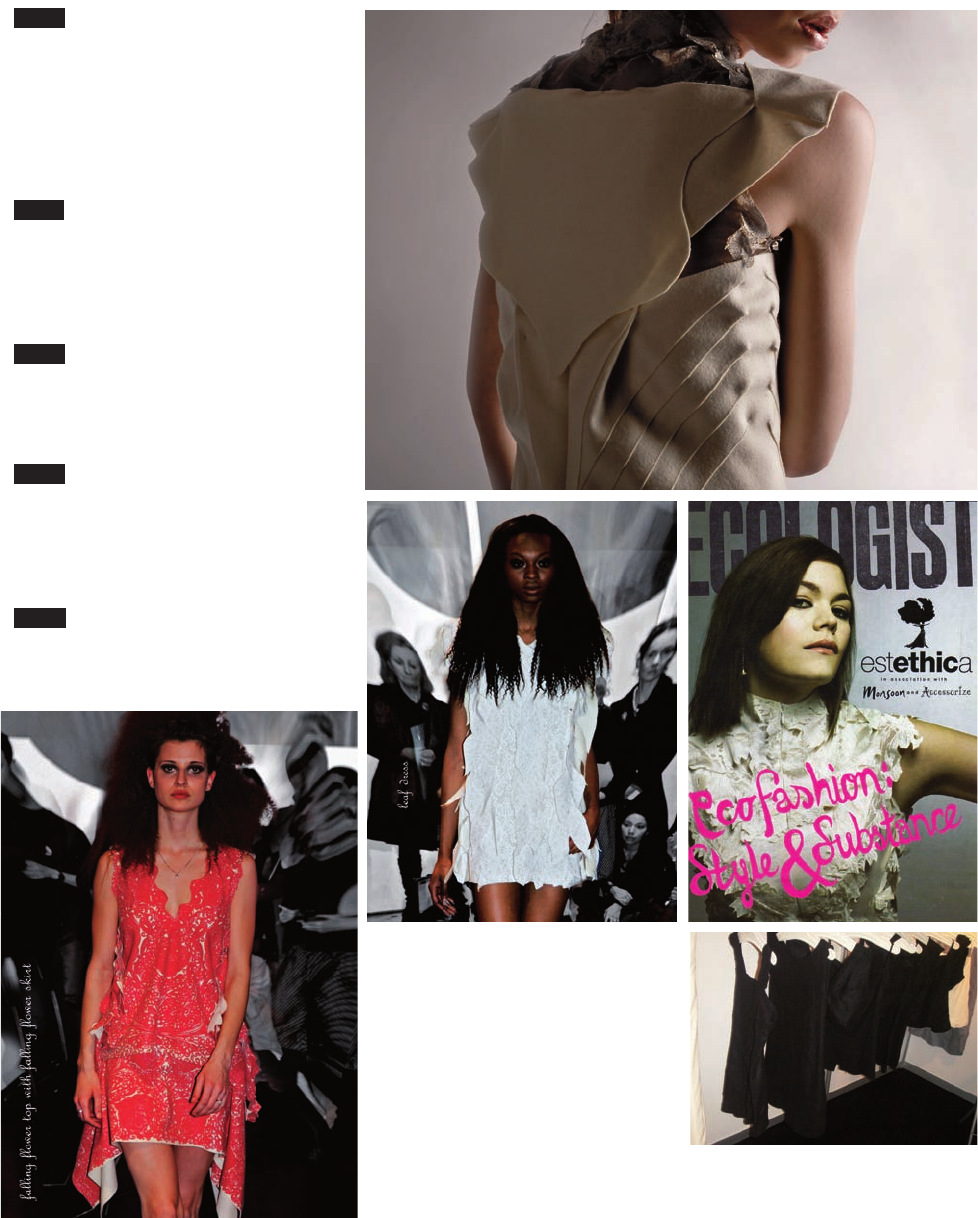
Mark Liu 203
062
TFD_libro.indb 203 26/11/09 16:53:15
Australian Mark
Liu has always been
interested in fashion,
science, and philosophy.
This was behind his
graduation with honors
with a fashion and
textiles design degree
from the University
of Technology in
Sydney. While writing
his dissertation on
innovative materials
and new technologies
in fashion, he found
the idea of furthering
his study of those
concepts to be of great
appeal. So he went to
London, where he took
an MA in design for
textile futures. The
fruit of these studies
was his development of
Zero Waste fashion, a
technique to eliminate
waste when cutting
patterns. For this to
happen, the rules of
patternmaking needed
to be torn up and
reinvented. Zero Waste
fashion had a successful
debut at Esthetica,
the space dedicated to
sustainable fashion at
London Fashion Week.
Mark Liu
www.markliu.co.uk
TFD_libro.indb 203 26/11/09 11:39:10

TFD_libro.indb 204 26/11/09 16:53:17
615
T
RADITIONAL MANUFACTURING VS. EXPERIMENTATION. I like to nd out why people did
what they did traditionally and then experiment with it. You must remember that
what we nd traditional at the moment was once experimentation in the past. I think it
is a good idea to have key pieces that represent the essence of the collection.
611 INSPIRATION. I like to lay down
all the things that inspire me on the oor
(they can be books, objects, magazine cut
outs, or words written on paper) and look
at them all to see patterns. This is a good
way to nd a theme. I like to obsessively
research what is currently being done
and then see what has not been done. It is
also good to nd a problem or issue that
has not been resolved yet. The greater
the challenge, the more interesting the
outcome.
612 D
EVELOPING A COLLECTION. The
concept must become the thought process
that creates each garment. It becomes
predictable to cut and paste different
themes from different time periods. I nd
it much more interesting to re-design the
design process as part of the concept.
613 M
ATERIALS. I like to buy
organic or alternative fabrics which are
environmentally friendly. To do this you
need to know exactly how and where they
are made. It takes a lot of time and effort
to trace the material from the ber all the
way to the nal fabric. Sometimes I buy
through textile agents and other times
I am literally talking to the farmer who
grows the animal or crop.
614 I
NDIVIDUALITY VS. GROUP BELONGING.
Creations invoke different responses
depending on who is wearing them. Their
personality will determine individuality or
group mentality.
204 1,000 Ideas by 100 Fashion Designers
TFD_libro.indb 204 26/11/09 11:39:10

Mark Liu 205
TFD_libro.indb 205 26/11/09 16:53:24
616 EVOLUTION. If you read, research,
and experiment as much as possible it
will be difficult not to improve every six
months. My designs always have a sense
of curiosity to them even though the
materials, themes, and techniques are
constantly changing.
617 I
S FASHION ART? I do not consider
myself a ne artist. However, I do create
objects of beauty and deal with concepts
that some people consider art. I prefer to
call it fashion and research.
618 A
DVICE. If you can’t create what
you want and making it seems impossible,
consider then that maybe it does not exist
yet and you have to invent it.
619 G
OOD HABITS. Don’t be afraid
of failure, learn how to confront your
weaknesses and have a nancially secure
business plan (this is much easier said than
done).
620 A
CKNOWLEDGEMENT. Inspiring
others to live in a more sustainable way is
the best praise I have gotten for my work.
TFD_libro.indb 205
26/11/09 11:39:10
Get 1000 Ideas by 100 Fashion Designers now with the O’Reilly learning platform.
O’Reilly members experience books, live events, courses curated by job role, and more from O’Reilly and nearly 200 top publishers.

